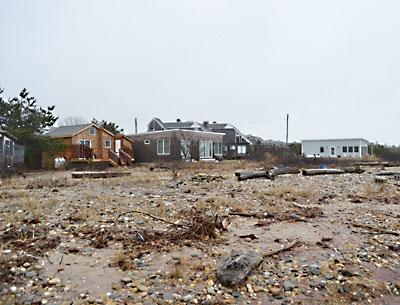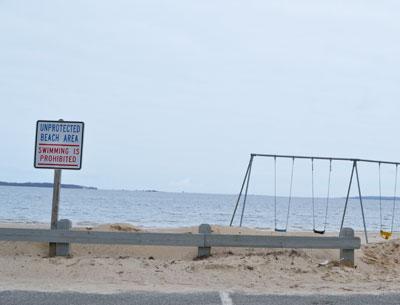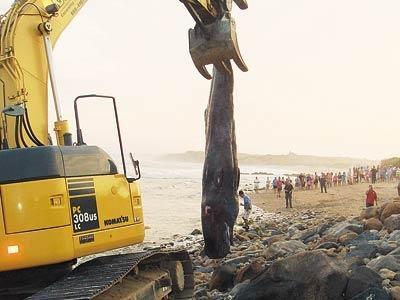Parade Grand Marshal Dedicated to Education
Parade Grand Marshal Dedicated to Education

In addition to the usual files, computer, and tons of books in Jack Perna’s office at the Montauk School, his desk is littered with trinkets, most given to him from students. One is a ballerina doll that he received from a former student who is now a dancer.
Mr. Perna holds the title of school superintendent and principal, and as of this weekend he will also be known as the grand marshal of the 51st annual Montauk Friends of Erin St. Patrick’s Day parade, which starts at 11:30 a.m. on Sunday.
“I don’t think it’s hit me yet,” he said on Tuesday at a school board meeting. “I’m sure when I turn around that corner onto Main Street, I’ll get it.”
He remembers walking in the very first parade with his sixth-grade classmates from the Little Flower Catholic School, now known as St. Therese of Lisieux Nursery School. His family had moved to the hamlet from the Bronx full time in 1958. He attended the Montauk School for a bit over a year before transferring to the Catholic school, which had just opened.
His family owned several businesses in Montauk, including the Lakeside Inn, now the Surf Lodge. They also owned a cluster of houses in the Ditch Plain area, where he spent his summers with extended family, which included 40 cousins, several of whom still live in the hamlet.
After he graduated from East Hampton High School, Mr. Perna attended Suffolk Community College and graduated from Southampton College in 1972. He immediately started teaching the fourth grade at the Montauk School. He became vice principal in 1978.
Bob Fisher, a former grand marshal, was the principal of the school at that time and offered him a position in the administration while allowing him to continue teaching. Mr. Fisher thought the name Jack was too informal, and so renamed him J. Philip Perna. The name stuck and most of his correspondence is still signed J. Philip Perna.
He earned a master’s degree and New York State certification as a school district administrator in 1977, and a certificate of advanced study and New York State certification as a school counselor from Hofstra University in 1990. He was offered the superintendent’s position in 1995.
During his schooling, Mr. Perna worked at Pizza Village, which was owned by his aunt and uncle, and at Gurney’s Inn in winter. In 1980, he and a partner bought Pizza Village and ran in until 2000, when it was sold to the current owner. While the boss there, he often hired Montauk kids to work the counter and the pizza ovens.
The superintendent is known for his impeccable style of dressing on the job, always in a suit, starched shirt, tie, and overcoat. But on some days he dresses as the Easter Bunny to have breakfast with the kindergarten students at John’s Pancake House or as Zero the Hero on the 100th day of school each year.
His days start at 4:30 a.m., he said, when he fires up his computer and starts to answer e-mails and read the news. When it snows, it’s about that time that he determines whether school will be open or not.
Once he gets to the school, at about 7:45 a.m., he does a bit of work while waiting for the buses to arrive, and then he goes outside to greet the students. Each afternoon he helps manage the exodus.
A regular day includes meeting with parents, scheduling, working on the budget, and observing new teachers. He said he tries to get involved with whatever program they’re working on to put the newbies at ease. He is also required to observe the tenured teachers a few times a year. He has never called in sick and has missed workdays only for family funeral services.
Twice a day he walks around the entire building, peeking in at classes and making sure everything is running smoothly. “I sometimes can be annoying,” he said.
When the eighth graders go to Washington, D.C., for the annual field trip, the superintendent often drives there to spend at least one day with them, visiting the sites that are scheduled for that day.
Mr. Perna has also been known to discreetly help students financially, and has at times driven some to their homes in case of a forgotten permission slip. He used to call former students to congratulate them for making the high school honor roll, but he no longer receives that information, he said, so the calls ended.
He is a former member of the board of directors of Montauk Youth, the Montauk Chamber of Commerce, the Montauk Citizens Advisory Committee, and Third House Nature Center. Currently, he serves as a trustee at Fort Hill Cemetery in Montauk, and has served as co-chairman of the East Hampton Town Anti-Bias Task Force, the East End Health Plan, and the Suffolk County School Superintendents Association. He has been a member of the House of Delegates for New York State’s Council of School Superintendents.
As if that isn’t enough, he teaches religious education at St. Therese of Lisieux on Sunday mornings. Asked when he rests, he laughed and said, “Sometimes on Saturdays.”
There will be no rest for Mr. Perna this weekend, as he is expected to attend a grand marshal lunch tomorrow, a cocktail party on Saturday, the parade on Sunday, and then a bus ride to all the local establishments that have chipped in financially. Not a big drinker of alcohol, Mr. Perna said he has already told the Friends of Erin, “I’m not drinking for any of this.”
Faced with thousands of people staring and yelling out to him as he leads the parade, he might need a stiff one, though, just to make it to the end. And several bar owners have a tradition of walking out into the parade to warm up the grand marshal with a shot of whiskey, sometimes in a teacup.






